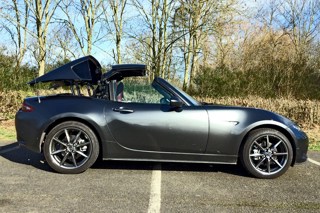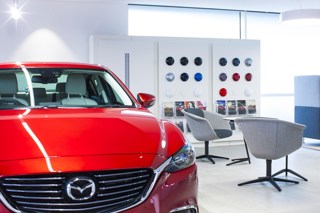After all, estates were all about giving family cars more room and suddenly MPVs offered a better answer to the same question. However, the truth has turned out to be very different; as so often, consumers refused to run along the channel that had been laid out for them.
Estate cars are booming in every segment (see table), with just one exception. That exception is lower medium, where compact MPV models have grown to take 27% of the segment.
With such a wide variety of compact MPV models, including driver-biased ones like the Seat Altea and Ford C-Max, it is no surprise that penetration of estates has dropped since 2000. However, the segment share of estates is still higher than in 1990, which is a remarkable achievement.
In upper medium, not only has share increased by 8% since 2000, but estates are also now outselling saloons for the first time. Considering that saloons outsold estates by two-to-one 10 years ago, there has clearly been a transformation in attitudes.
What is behind it? The first reason is that saloons have fallen out of fashion in the upper medium segment. Or rather, people who like saloons no longer buy upper medium cars. Instead, many have moved into compact executive saloons like the BMW 3-series.
Those who are left in upper medium are frequently there because they appreciate the versatility of a hatchback or estate. But this still does not answer the question of why they haven’t moved out into MPVs, if space is so important.
Many customers still see MPVs as being too ‘mumsy’ – the motoring equivalent of a beige cardigan. An estate car provides space, but can be passed off – even if only the customer’s mind – as a ‘lifestyle’ vehicle. All those adverts featuring estate cars carrying surfboards and skis have had an effect.
The difference between carrying things and people was neatly illustrated by a piece of research undertaken by an MPV manufacturer in the Nineties.
It wanted to know why Swedes, being such great buyers of Volvo estates, had no apparent interest in buying its MPV.
The answer came back that outdoor Swedes, with generally small families, had no use for seven seats, but had plenty of use for a long cargo area for tents, bikes, and so on.
In compact executive, the rate of growth has been even faster – from 5% segment share 10 years ago to more than 25% today. Of course, with space being at such a premium in so many compact executive models, anything that give a bit more space (even if it only for luggage) has a clear advantage.
Estates now make up between 30% and 40% of the sales of many established models, such as the Audi A4, Jaguar X-type, Saab 9-3 and Volvo S40/V50. In the executive segment, penetration is even higher, although it now seems to have stabilized at around 33%.
In executive segments, the main competition comes from SUVs rather than MPVs, but the effect is quite similar. Customers across the board still regard the estate as a good compromise – not as mumsy as an MPV and not as in-your-face as an SUV.
For a body style seen as on the way out 10 years ago, the estate car is in startlingly good health – and if there is a backlash against SUVs, it could get healthier still.
#AM_ART_SPLIT# Estate share by segment

















Login to comment
Comments
No comments have been made yet.